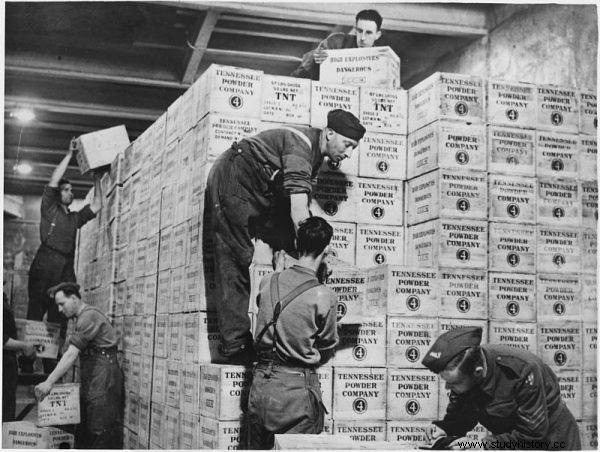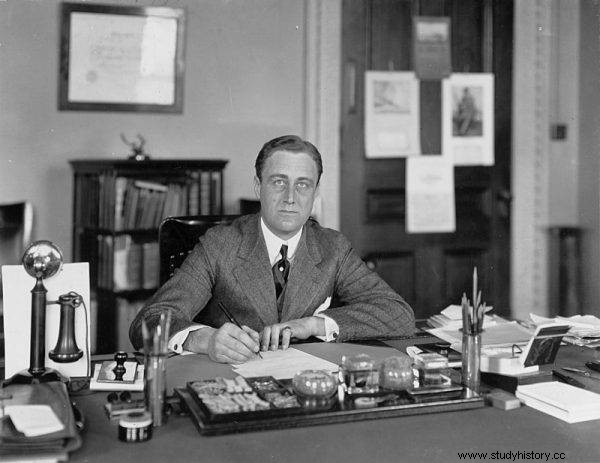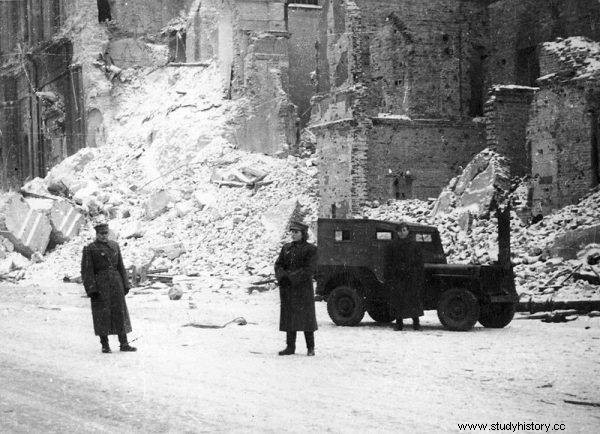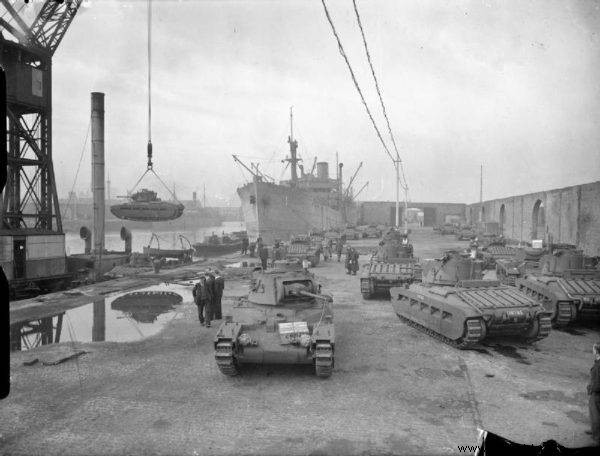In connection with the war in Ukraine, the US Senate unanimously reactivated the Lend-Lease Act from World War II. What is this law about?
Before the outbreak of World War II, the United States strongly focused on isolationism. But the lightning-fast offensive of Nazi Germany in Europe showed that not only could it take over Europe, but even threaten the security of the USA. Something must have shaken in American foreign policy.
Genesis of the law
In this case, it seems that the US authorities understood the scale of the threat more quickly than American society. Suffice it to say that even in 1941 most Americans were against declaring war on Germany. Rather, the policy of neutrality was expected to continue. President Franklin Delano Roosevelt thought about the use of "peaceful means" , that is material aid for the states invaded by Germany . Here, however, was the US neutrality legislation that made it impossible to export arms.
After various approaches to the subject, finally on September 13, 1939, the possibility for other countries to make purchases was introduced on the basis of Cash and Carry. In other words, other countries may have bought weapons from the US if they had taken her on their own ships. This opened up new opportunities, first of all, for Great Britain, which, for example, in 1940 received ships from the USA remembering the times of World War I in exchange for a 99-year right to lease bases, among others in the Bahamas, Newfoundland and Jamaica.

On September 13, 1939, the possibility for other countries to make purchases of weapons was introduced
In the face of the German offensive, such aid was, however, a drop in the ocean of needs. A new legal regulation was needed. In addition, Britain's financial reserves have declined at an alarming rate. The idea of leasing equipment came up . This is how Roosevelt introduced the logic behind it:
If there is a fire in a neighbor's house - then of course I will allow my rubber hose and water from my well to be used to extinguish the fire, without asking me to pay 15 dollars immediately, because that is how much the hose cost.
The US was to receive payment or compensation after the end of the war. The foundations for the act we know as the Lend-Lease Act have started.
What was the Lend-Lease Act?
The author of the bill was a young lawyer, Oscar Cox, working in the Treasury Department. From January 6, 1941, work on its final version was carried out at the White House. It was submitted to the Senate on January 10th. A good argument was needed. And so, in the public discussion, there were, inter alia, from Henry Stimson, Secretary of War, who said that the US was for the first time in a situation where a country with a significant power could take over the Atlantic, and from Henry Morgenthau, Secretary of the Treasury, who said that if the law was not passed, she had to stop fighting. Eventually, the law was passed on March 11, 1941.
The Lend-Lease Act authorized the President of the United States to: sell, transfer, exchange, rent, loan, or otherwise determine the usability of any defense item to any state the president deems essential to protect for the defense of the United States .

Ultimately, the law was passed on March 11, 1941.
He also gave the president quite significant powers, including it was up to the president to decide on the quantity and types of weapons to be donated, as well as on the dates and conditions for providing aid. The president also authorized individual governments to receive US support. It was originally assumed that the aid would not exceed $ 1.3 billion . Of course, later it turned out to be insufficient. It was also impossible to keep the original term of this law - June 30, 1943 . Both in 1943 and 1944 it was extended for another year.
Lend-Lease Act and Poland
For obvious reasons, Poland was also interested in participating in the benefits related to the functioning of the Lend-Lease Act. Various personalities were involved in talks with the American side on this matter. One of them was Ignacy Paderewski, who exchanged letters with President Roosevelt himself . In one of the responses of the US President, which he consulted with the Secretary of State and received by Paderewski, Roosevelt emphasized that: Polish armed forces are fighting for democratic ideals, hence Poland can count on Lend-Lease Act loans .
Eventually, Franklin Delano Roosevelt placed his signature on a document that covered Poland by law on September 4, 1941. It was also emphasized that the heroic resistance of Poles is: vitally important for the defense of the United States . Władysław Sikorski was informed much earlier about the plans to include Poland in the Lend-Lease Act. On June 19, such an order was given to Ambassador Anthony Drexel Biddle (accredited to the governments of exile in Great Britain) by US Secretary of State Cordel Hull. Besides, in April 1941, Roosevelt himself made a promise to include Poland in this program.
What did the Poles get from the USA?
The agreement was officially concluded on July 1, 1942 in Washington . The USA was represented by the aforementioned Cordel Hull, and Poland was represented by Ambassador Jan Ciechanowski . The most important element of the concluded agreement was the obligation of the American side to supply Poland with military equipment , provide defense services, and provide information as deemed appropriate by the US President. Detailed arrangements were to be made later. After the war, Poland was to return to the US funds that were not used, which the United States would consider useful.
Another interesting provision:the implementation of the program should not have disrupted bilateral trade. Both the USA and Poland also undertook to reduce customs barriers and other elements that may limit the said trade.

Polish soldiers from the 1st Polish Army together with Jeep, which was handed over to Polish troops as part of the Lend-Lease program
Poland settled all its obligations after the end of the war. But what have we gained thanks to the American law? Various data are available here. Let's go back to American military documents from the early 1950s. According to one of them (referring to the aid granted in the years 1941–1949) our country received support from the USA in the amount of USD 2,122,000. Let's move on to the details . Poland received $ 95,000 weapons and $ 8,000 ammunition as well as non-combat and other $ 66,000 vehicles. There is no information in the document that combat vehicles were transferred. The overall value of the provisioning assistance, including medical assistance, was $ 432,000. It should be stipulated that this document refers only to aid received directly, not through other countries - primarily the USSR.
The scale of American aid under the Lend-Lease Act
In the context of the overall aid that the United States has given its allies, the most mentioned amount is about $ 50 billion . The program finally closed when Japan was defeated. Even before this fact, President Harry Truman publicly announced it on August 21, 1945. However, in the USA there was a huge amount of goods that were to be shipped under the Lend-Lease Act. Something had to be done about it. Thus, the "Lend-Lease pipeline" was invented, which involved the fact that many countries were granted loans to buy these goods. By the end of 1946, agreements in this regard were concluded with 14 countries. The total value of the goods shipped was approximately $ 1.2 billion.

The biggest beneficiary of the Lend-Lease Act turned out to be Great Britain
In total 45 countries benefited from support under the act itself. By far the biggest beneficiary of the Lend-Lease Act turned out to be Great Britain, which by July 1, 1945 received a total aid of around $ 14 billion . The second largest group was the USSR, for which the US allocated a total of over 9 billion (according to another source, more than 5 billion). Rad displeased, even Joseph Stalin could not underestimate the scale of this help. He even wrote about it in a letter to Harry Truman on June 11, 1945, in which he mentioned that the agreement: played an important role and contributed significantly to the successful end of the war against the common enemy, Nazi Germany . China and India received aid of $ 2.2 billion.
Weapon supply
Of course, the greatest support was provided in the form of various types of weapons. The total amount of this aid by July 1, 1945 amounted to over $ 20.5 billion and accounted for over 49% of the total . The most expensive aid turned out to be in airplanes (almost 5 billion), ships (3.6 billion) and tanks and their parts (3.5 billion). $ 8.6 billion has been allocated to help with materials, industrial products and machinery. 5.9 billion was the cost of food and other agricultural products. 4.5 billion was the cost of leasing and servicing ships, and support in the form of petroleum products was valued at 2.1 billion.
Sometimes, in armed conflicts, the right support, in the right place and at the right time, may determine victory. American aid was such support. Without it, the political map of our continent could look completely different. Policymakers should keep this in mind and draw appropriate conclusions for the present and the future.
Bibliography
- Axelrod, Political History of America's Wars , CQ Press, Washington 2007.
- Błaut, Lend and Lease. United States aid to the fighting states in 1939—1945 , "Scientific and Didactic Yearbook. Historical Works ", No. 14/1989.
- Foreign Aid by the United States Government 1940-1951 , United States Department of Commerce, Washington 1952.
- Hułas, Credits for financing the Polish Armed Forces in the West during World War II , "Scientific Journal of the Military Museum", No. 4/1990.
- Matrzak, Ignacy Jan Paderewski. A legendary figure in the history of the Polish nation , "Przegląd Pruszkowski", No. 2/1995.
- Pastusiak, Roosevelt and the Polish cause , Publishing House "Książek i Wiedza", Warsaw 1980.
- The United States Army in World War II. Statistics. Lend-Lease , Office of the Chief of Military History, Department of the Army, Washington, D.C. December 15, 1952.
